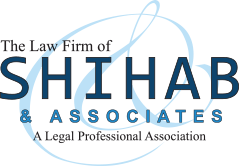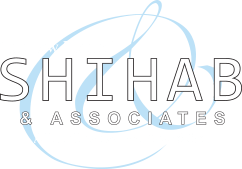Under the Obama Administration, the U.S. Department of Homeland Security (DHS) and Department of Labor (DOL) have markedly increased their efforts in worksite enforcement. Consequently, there has been a significant increase in H-1B site inspections resulting in audits. United States Citizenship & Immigration Services (USCIS) has confirmed that random, unannounced onsite inspections will be a regular occurrence in the future. This will include sending investigators to the H-1B worksite to verify that the H-1B employee is working at the appropriate location and performing the work as described in the H-1B petition. The objective of the unannounced visits and investigations is to detect abuses of the visa program. These investigations can raise issues ranging from Labor Condition Application (LCA) discrepancies to committing fraud on the USCIS. However, the most commonly cited issue is non-payment of a prevailing wage to the beneficiary.
To prepare our clients for these unannounced inspections, The Law Firm of Shihab and Associates will help you compile an H-1B Public Inspection File. We can also advise you on the best practices for I-9 compliance, what records you need to keep available, and any E-Verity questions you might have. These practices will often answer all the questions that an audit or inspection might raise, limiting your company’s exposure. However, there are some situations where these questions cannot be simply answered and the issue must be litigated.
Strategies for LitigatingOnce it has been determined that litigation is the most appropriate option for your company, there are several tools and strategies that can be used to build the best case for your company. Some of the most basic litigation tools include requests for admissions, interrogatories and request for production of documents and depositions. These will lay the evidentiary foundation for your case and help establish the basic facts. Other, more advanced tools include, filing a motion in limine and if a party is seeking to submit evidence from a foreign country, working within the Hague Convention to ensure that the evidence may be used in the United States.
Motion in LimineA Motion in Limine is made to eliminate or prevent certain pieces of evidence (documents or testimony) from being presented at trial. Motions in limine should be painstakingly drafted so that it is abundantly clear what evidence needs to be excluded and the reasons why the evidence is unfairly prejudicial if entered into evidence. The reasons that evidence might be excluded include not following the proper procedures in obtaining that evidence or not following This tool is obviously appealing when the DOL Counsel seeks to introduce evidence that is extremely derogatory to your case.
However, this tool must be used artfully. In some instances, motions in limine may draw the DOL Counsel’s attention to evidence or arguments which they had not previously considered. While this is an unlikely result in cases where discovery has been completed, it becomes a real danger where discovery has been brief or when opposing counsel has only inquired about very specific issues. Accordingly, tailoring your motion in limine to the facts of your specific case is essential and when wielded by an experienced litigator can be a powerful arrow in your quiver.
Hague ConventionThe Hague Convention of 18 March 1970 on the Taking of Evidence Abroad in Civil or Commercial Matters (“the Convention”) was held to provide an effective means of overcoming the differences between the civil laws with respect to the taking of evidence in different countries. The Convention lays out the appropriate methods for the taking of evidence abroad in civil or commercial matters. The Convention, which the United States is a party to, provides for the taking of evidence by (i) letters of request, or (ii) by diplomatic or consular agents and commissioners. If the evidence is obtained in a foreign country it must comply with the Convention to be properly introduced in a proceeding in the United States.
1. Letters of Request
A judicial authority in one country may request evidence, by means of a letter of request, from another country to obtain evidence which is intended for use in judicial proceedings in the requesting country. The judicial authority of the requesting country must transmit the letter of request to the “Central Authority” of the country addressed for adjudication.
2. Diplomatic or Consular Agents, Commissioners
The Convention allows diplomatic or consular agents and commissioners to take evidence. However, to do so may be subject to the prior permission of the appropriate authority of the country in which the evidence is to be taken.
No matter the size of your organization, if you employ foreign nationals, it is in your company’s best interest to comply with all immigration regulations and international laws and be prepared for an inspection or audit before they happen.


